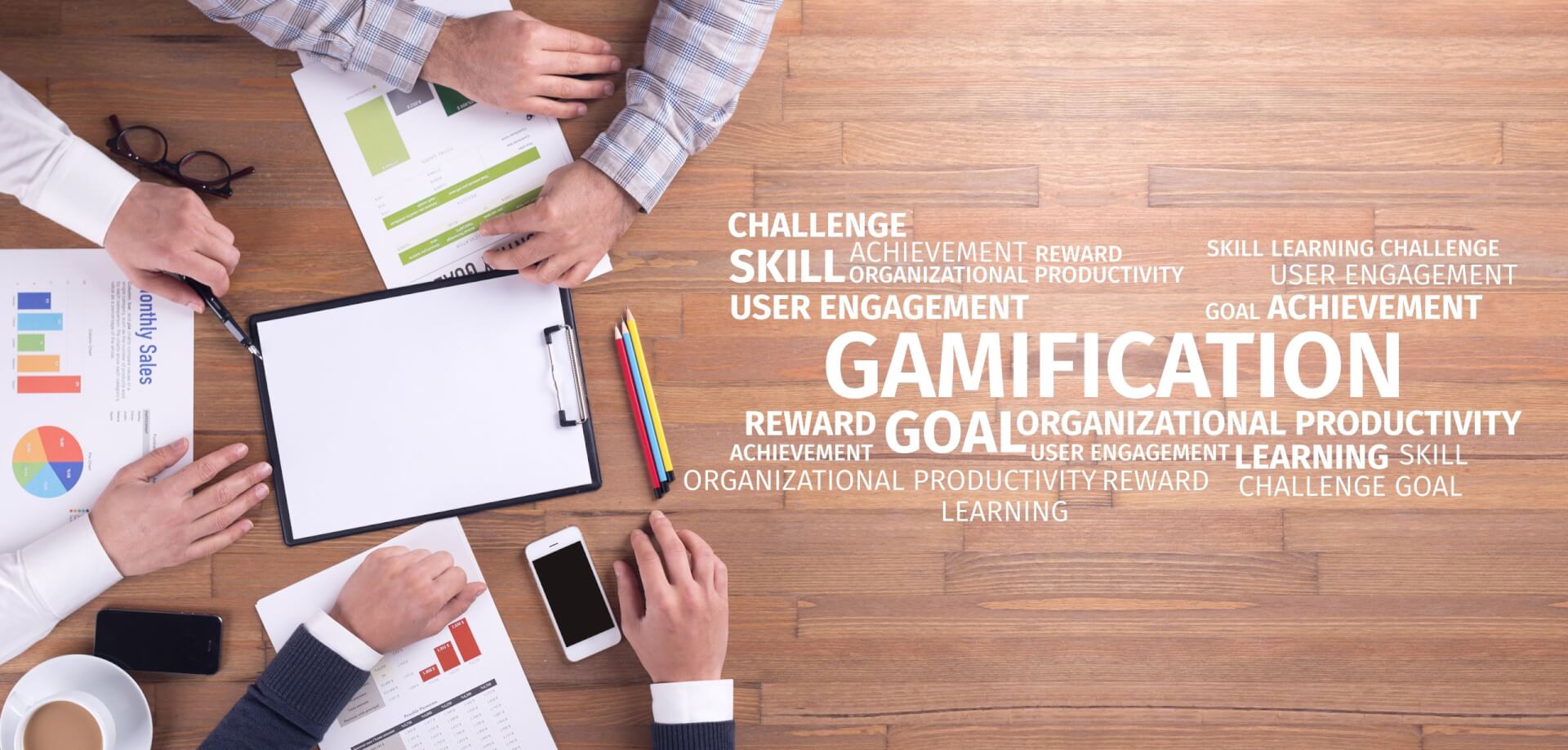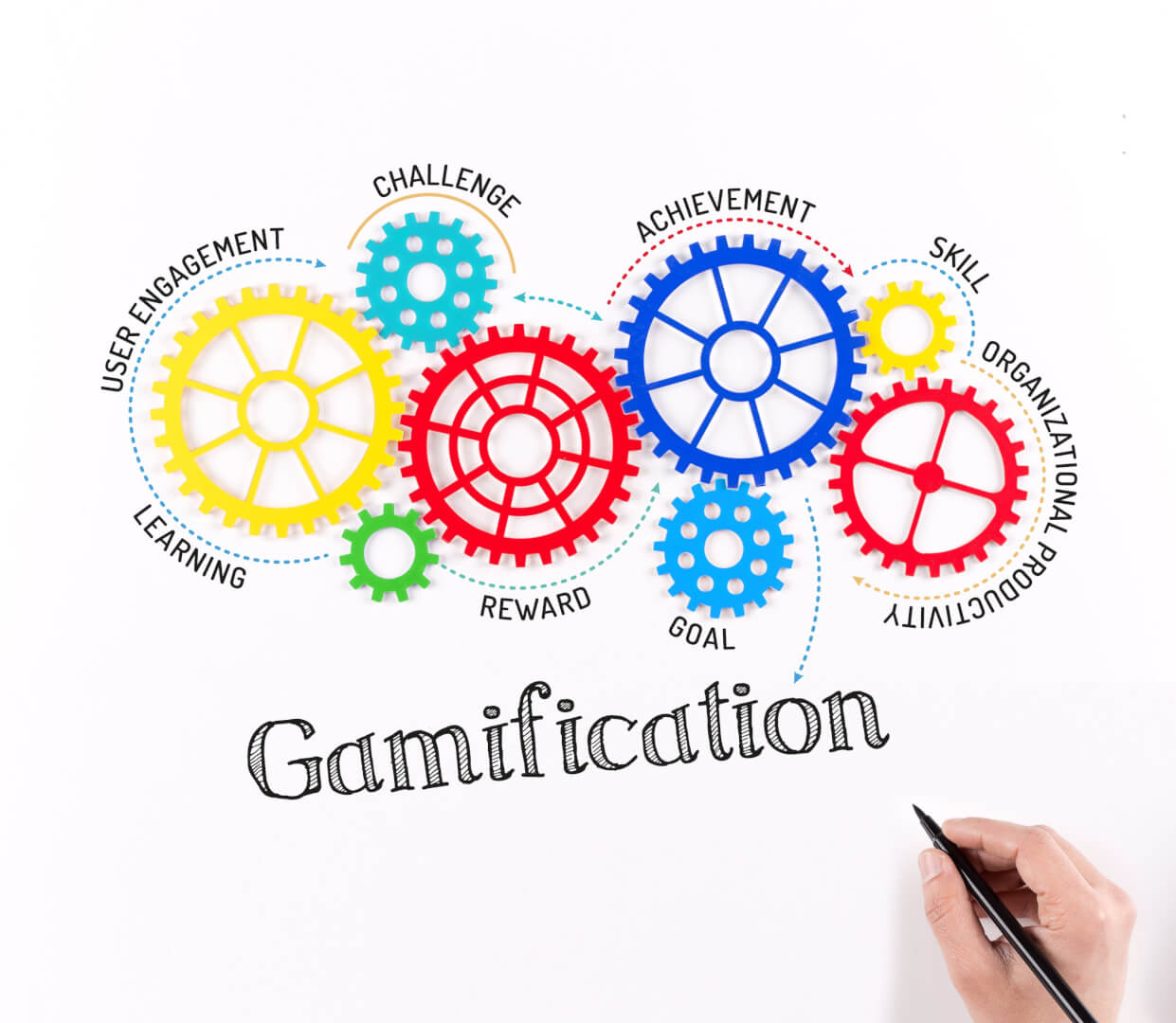In other words, what problems does gamification solve, and then the follow-on question from that should be is gamification the best solution to solve that problem?
When I look at the types of work we have done and had good results with, we can summarise the problems as follows:
- Attraction
- Retention
- Motivation
Let’s have a closer look at each of them.

Attraction
The problem of attracting the right people to the team, the right skills to the team, or even a more high-level view of simply attracting people to your business or application is what gamification has solved for our clients.
We worked with a large public service organisation to attract more people from BAME (Black, Asian, Middle Eastern) backgrounds to apply, who didn’t necessarily have a prior history with this type of work and therefore typically self-selected out of applying. In order to test our relevance to this audience, we brought an initial pilot to this group and asked for feedback which then resulted in adapting some of the narratives to suit this audience.
We worked with a defence organisation to attract engineering curious young people, who may not know yet that they could be good engineers but have some of the traits such as enjoying problem-solving, getting to the root cause of a problem, and finding solutions.
We worked with smaller companies and helped them make quizzes for social sharing to attract and segment clients into working with them. The quiz could be focused on specific product preferences or give the quiz taker insights into themselves or even offer them special deals for making the effort.
Attraction as a problem can have many different nuances, for us when we work with clients we look at working out what the key differentiator is that will lead to a campaign’s success. We will actively look at ways to understand and engage your audience in the design process to allow for optimal results.
We can’t share the results of our clients due to confidentiality, but we can share these two attraction examples which we found online with some amazing numbers in them:
- British luxury fragrance brand Molton Brown had its Christmas film, as part of its digital campaign, gamified through the app Finding Poppy, which resulted in 47,685 new raffle draw entries, 32,367 new users, 21,967 referrals, and 18,983 new additions to its mailing list (SMACK, 2021).
- Target created an app through which users can create Christmas wish lists, which generated 75,000 initial downloads. During the holiday season, the app amassed over 100,000 wish lists, 1.7 million entered items, and potential sales of $92.3 million (Ohio University, 2020).
Retention
Retention of staff or clients in our view starts with good onboarding and then providing an environment in which they can find a path to mastery or clear communication on the next steps. It is a known fact that great places to work retain staff better, usually that means more than one thing really works right and well to the benefit of great people. The same with loyalty, customers will keep coming back to companies they like, know and trust and treat them well.
Because retention is such a vast topic, we have worked probably on a fun cross-section and there are probably still some areas that would be new to us.
We worked with a financial organisation on their loyalty scheme to nudge clients to learn more about their investments and take an active role in managing their investments based on their risk profile and preferences.
We worked with a mobile app team for dog owners to help create goal-driven customer journeys from onboarding to learning and generating good habits for pet owners and their dogs. We had a lot of fun insights from their customer audiences and there were immediately actionable steps that could be implemented and also some that required more discussion by their product team.
We worked with a learning platform to help users get onboarded so they would benefit from all the features and set them up to keep coming back. We had a variation on this theme for an in-house learning team in a multinational organisation, that had a fabulous digital learning environment but their people weren’t using it.
In loyalty and staff retention we know that how you make people feel is the key differentiator. Here are some numbers
- Texas bank Extraco tested a gamified process that taught clients about its offers and benefits, which led to a rise in conversion rate, from 2% to 14%, and raised customer acquisitions by 700% (TotalRetail, 2020; Mordor Intelligence, 2021).
- Software company Autodesk, upon leveraging gamification, lifted its trail usage rate by 40% and conversion rates by 15% (Mordor Intelligence, 2021).
- Microsoft’s gamified operations have led to 3.5 times more engaged employees who used updated product information for selling (Datanyze, 2020).
Motivation
Motivation is the third problem where gamification is often recommended to solve the problem. Now here we always have to do a bit more digging under the surface to define what the client means with motivation. It often is a bit like a doctor looking for symptoms and causes, before moving forward to finding a remedy. It also is especially in this category of problems that gamification may or may not be relevant as a solution.

Let’s look at a situation where we find low morale in a company, the owners come to us looking for gamification to motivate the team into a renewed spirit or action. When we then speak to the team we discover some unsavoury management styles and a lot of dysfunctional behaviour as a result to cope with the situation. Here gamification will not address the big elephant in the room. In this case, I would first bring this back to the management team to look into how they are part of the solution or we simply will not implement gamification.
The other thing we are frequently asked for is to make mundane tasks rewarding and motivational. I am always in two minds about these. We will never achieve true satisfaction of making the task enjoyable in its’ own right, but what we can do is enhance the experience around it. Whether that is by incentivisation or simply beating your own best self or simply nudging for that extra step.
In any case, when well defined what our client calls ‘motivation’, we can indeed reach results and often the indirect route here is more successful.
We worked with an insurance client where their issue was that people were avoiding truly selling cyber security insurance and we didn’t think motivation was the real issue but rather a lack of knowledge and reluctance in confidence to be able to prove how their solution would help their customer. We worked with them to create a collaborative game where the focus was to defend a business from cyber attacks. What people who played the game told us was that they retained examples even 6 months after playing the game and their confidence to talk about cyber security insurance had increased by 80%. We don’t know the ultimate sales numbers, but my best guess is that this also saw a positive upward trend.
One of my other favourite examples was a very basic case of gamification and very low tech, it involved a white board and colourful pens in an open plan office. I was asked to persuade a CFO (chief financial officer) to sign off on a gamification project, but he was not convinced. I asked him if he could give me a process related problem he had. He said well if you could gamify getting expenses sent in on time and correctly that would save my team a hell of a lot of time. So I suggested the following, to use the team whiteboard which was pretty central in the office space and to list each team with a simple heart drawn beside it. For each correct and timely submission of an expense report, the heart would be coloured in gradually. It didn’t take long for teams to start noticing that accounting was colouring hearts beside team names, which caused curiosity of what it was about. The curiousity and subsequent peer pressure to not want to be in the bad books with accounting resulted in managers encouraging their team to get expenses in. Secondly it also uncovered some knowledge gaps, which were adressed. Within 90 days, the monthly nightmare was reduced to only a few remaining outliers not getting expenses in which was a vast improvement from over 50% of the company not having their expenses in. It proved to the CFO that indeed this could work in their company and he signed of on a pilot project.
Hopefully these examples give you some flavours of what is possible with gamification. So the next question to answer really is are we the company that can help you with these problems?
How can we help solve these problems
If you are unsure whether your problem can be solved with gamification, then my suggestion is to book our paid strategy call, which is a 90 minute to 2 hour deep dive into your specific case. At the end of the call you will already know whether it is possible to solve your problem with gamification or whether another option is actually better. You will also have a path to follow to solve the problem, which will hopefully give you some peace of mind. We will also often advise you to do more research into a few of our recommended solutions to see which will fit your culture best.
You can book your strategy call here.
If your problem is already described by one of the examples above and you want to take a first next step, then we can recommend a gamification design workshop, where we take your process, app or problem through our gamification design loops. The workshop can take place online or in person. We strongly suggest you invite a whole team to this workshop or a cross section of the departments necessary for the delivery of the process, to get everyone owning a piece of the solution. Whether we need one half day or 2 half days, that depends a litte on the situation. But either way, the workshop is fun and get’s the creative thinking juices flowing. At the end you will have a range of ideas on how you could solve the problem and we then would happily guide you to help them come to fruition. You will have fun, you will have thought provoking discussions and most frequently improve the process from a brand new angle. It will require follow-up action, but at least you start with suggestions rather than a blank page.
To get started with a gamification design workshop, book in an enquiry call so we can get you started.


